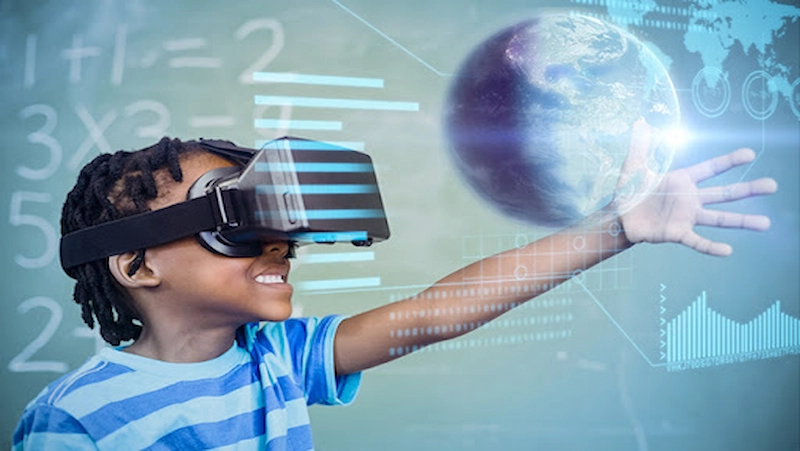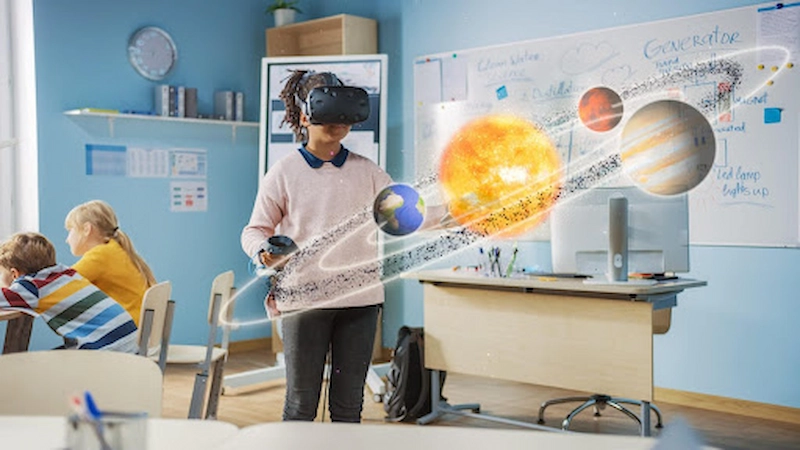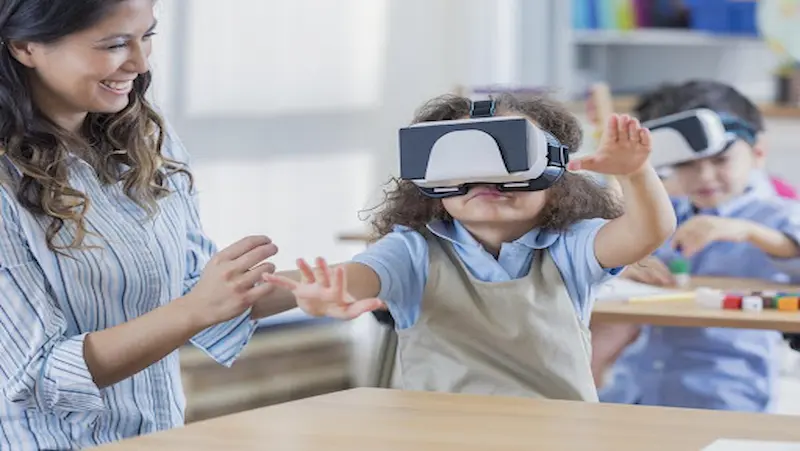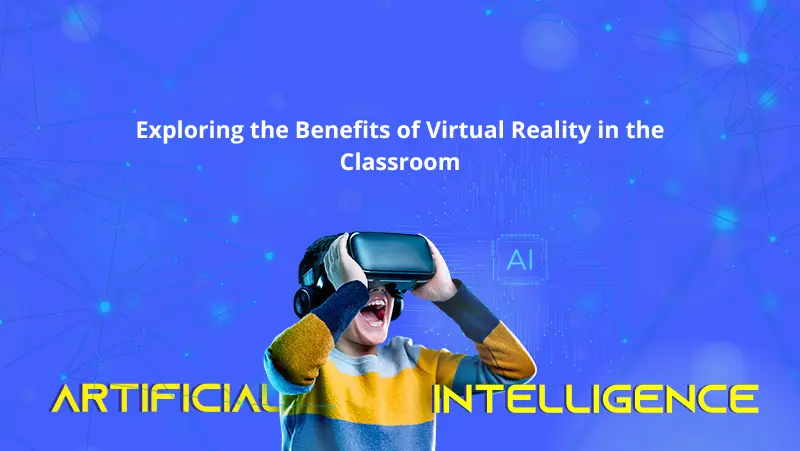In recent years, there has been a growing interest in using virtual reality (VR) technology in education, and for good reason. By providing students with immersive, interactive experiences, VR has the potential to revolutionize the way we teach and learn. In this blog, we will explore the various benefits of virtual reality in the classroom and how it can enhance student engagement, retention, and understanding.
From exploring distant lands and ancient civilizations to conducting virtual science experiments, the possibilities of VR in education are endless. By integrating VR into the classroom, educators are unlocking new possibilities for engaging and effective learning. In this blog, we will explore how virtual reality is revolutionizing education for children and the way they learn. Join us on this exciting journey as we delve into the fascinating world of virtual reality in education.

Table of contents
Enhancing Learning with Virtual Reality

Virtual reality allows children to step into virtual worlds and explore concepts in a way impossible with traditional textbooks or lectures. For example, children can dive into the depths of the ocean, travel back in time to historical events, or explore the human body in 3D. These immersive experiences enhance children’s understanding of complex concepts and make learning more engaging and memorable.
Promoting Active Learning and Collaboration

Virtual reality encourages active learning, as children can actively participate and manipulate virtual objects, experiment with ideas, and solve problems in a safe and controlled environment. VR also facilitates collaboration, as children can work together in a shared virtual space, communicate, and learn from each other, regardless of their physical location. This promotes teamwork, communication skills, and a sense of community among children, preparing them for the collaborative nature of the modern workforce.
Customizing Learning for Individual Needs

Virtual reality enables personalized learning, as it can adapt to the individual needs, pace, and learning style of each child. Children can learn at their own pace, revisit concepts, and receive immediate feedback, making the learning process more effective and tailored to their unique requirements. VR also caters to diverse learners, including those with special needs, by providing customized experiences that accommodate different learning preferences, abilities, and challenges.
Check robotics for kids.
Enhancing Social and Emotional Learning with VR

Virtual reality can also facilitate social and emotional learning for children. VR environments can simulate real-world situations, allowing children to practice social skills, empathy, and emotional regulation in a safe and controlled environment. This can be particularly helpful for children who struggle with social interactions or emotional challenges, providing them with a supportive and immersive learning environment.
Preparing Children for the Future

VR is a technology that is rapidly evolving and becoming more prevalent in various industries. By incorporating VR into education, children can develop digital literacy and technology skills that are essential for their future success. VR can also expose children to different careers and industries, helping them make informed career choices and prepare for the changing job market.
Conclusion
Virtual reality is transforming education for children by providing immersive, engaging, and inclusive learning experiences. From enhancing learning with immersive experiences and fostering creativity and critical thinking to overcoming barriers to learning and enhancing social and emotional skills, VR is revolutionizing how children learn and prepare for the future.
Visit robotics classes for kids.
Checkout BrightCHAMPS‘ blog page to get more such informative knowledge for your kid’s growth!
Frequently Asked Questions (FAQs)
VR is generally considered safe for children, but it is important to follow age recommendations and guidelines provided by manufacturers and educators. Supervision and moderation should be in place to ensure the safe and responsible use of VR.
Yes, VR requires specific equipment such as VR headsets, controllers, and a compatible device (such as a computer or a gaming console). It is important to choose age-appropriate and safe equipment for children to use.
While VR has many benefits, it also has some potential downsides. These may include the risk of motion sickness, the potential for addiction or overuse, and the need for proper moderation and supervision to ensure responsible use.












